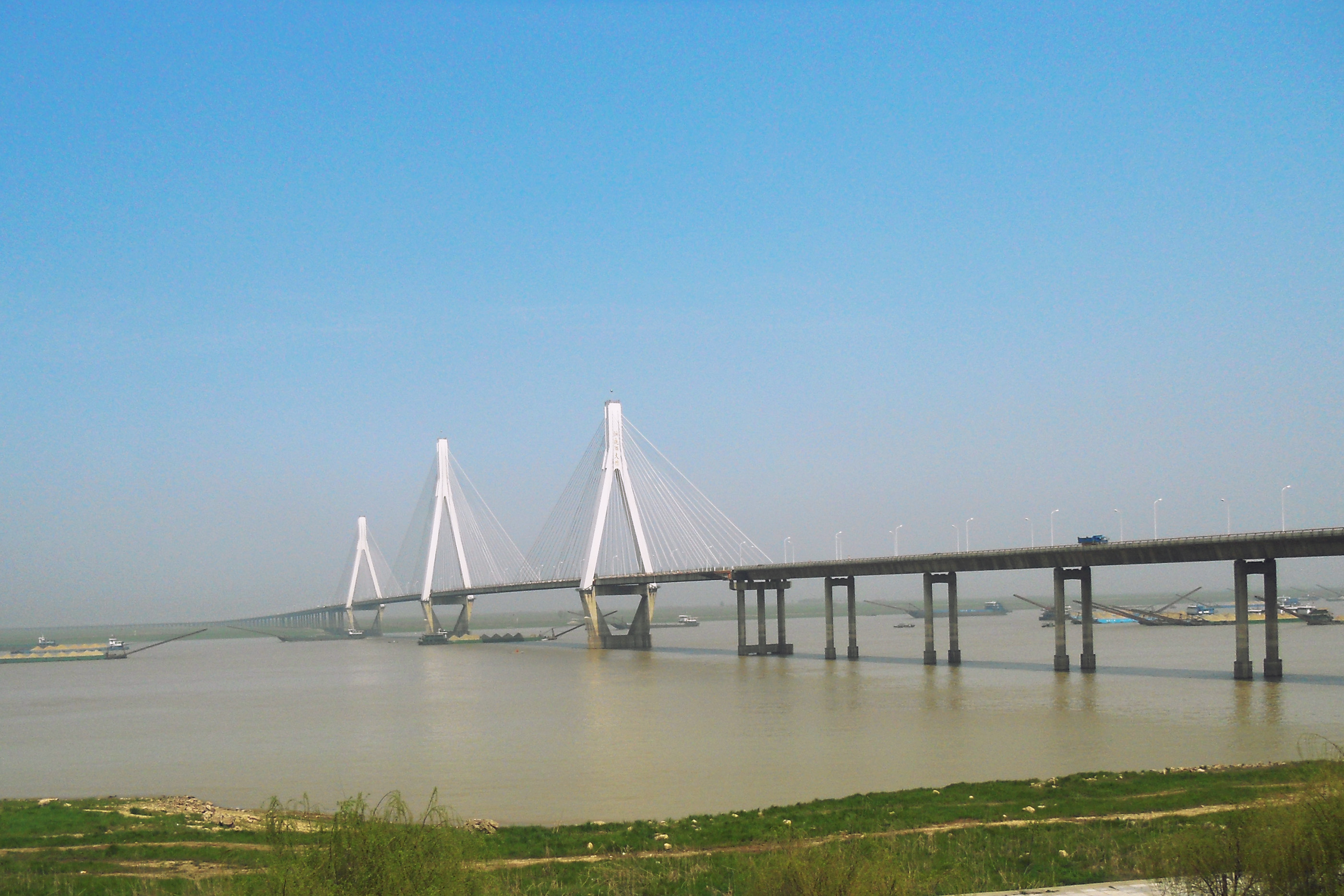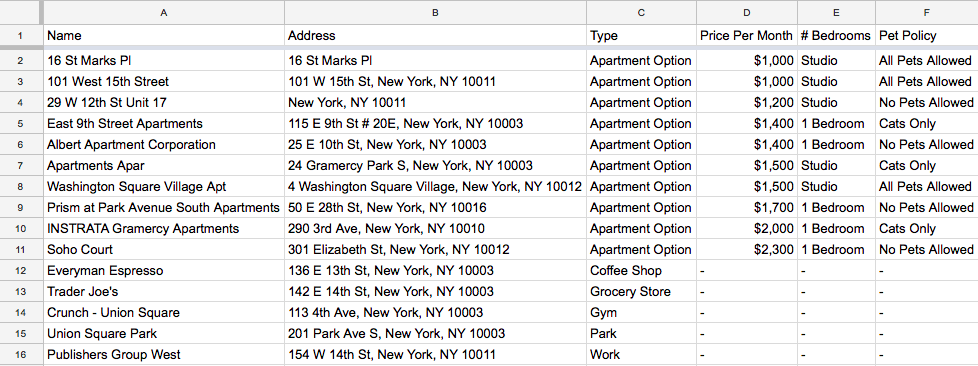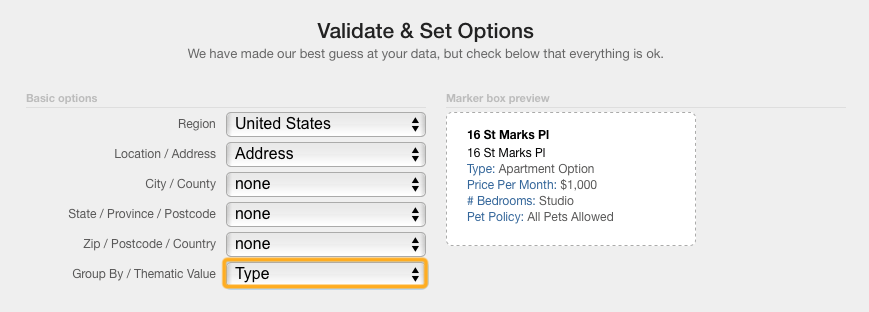Whether you’re working on a project for school or need to come up with a data-related analysis for work, BatchGeo can help you easily visualize your data so that you can provide smarter insights. Take Nobel Prize winners, for instance. The winners of the Nobel Prize — also called laureates, which stems from ancient Greece when the laurel wreath was awarded to winners for their honor — come from far and wide, although there are some countries with more Nobel Prize winners than days in a year. Yet, the countries with the most Nobel Prize winners don’t always hold the record for most laureates in each category. Some countries even have a slight advantage, seeing as some of their Nobel Prize winners have won more than one Nobel! Then there are those countries that missed out on adding another tally to their winners’ list because a winner said: “Nah, I don’t really want a Nobel.”
View Nobel Prize Winners by Country in a full screen map
Check out the map above of the Nobel Prize winners by country, which is just one of the millions of examples of maps you could create in seconds with BatchGeo. Or read on for examples of the insights we were able to pull from the map.
History Lesson Worthy of a Nobel Prize…
Even though there’s no Nobel Prize for History, we thought we’d briefly cover exactly how the Nobel Prize came to be. The prize was first awarded in 1901, but its origin actually came about before that. Alfred Nobel, a Swedish scientist, expressed his desire for the creation of the prizes in his will way back in 1895. Chemistry, Literature, Peace, Physics, and Physiology or Medicine were the original prizes first awarded in 1901. In 1968, the Economic Sciences prize was created. Although not technically a Nobel, it was created in Alfred Nobel’s memory, and so it often gets looped in with the rest of the prizes.
All of the Nobel Prize winners receive a gold medal, a diploma, and a bag of cash. As of 2017, that nice chunk of change is just over one million dollars.

Countries with the Most Nobels
As you can see from the map above if you group by medals, only three countries have won 100 or more Nobel Prizes. So let’s give it up for:
- Germany
- the United Kingdom
- the United States
Germany is a superstar when it comes to producing Nobel Prize winners, having won 108 medals. Thirty-three of those 108 medals are for Chemistry, and another 33 are for Physics. The most famous Nobel Prize winner in Physics was Albert Einstein in 1921. The next most prizes are 25 for Physiology or Medicine. The country has also received 10 medals for Literature, six medals for Peace, and one for Economic Sciences.
The United Kingdom has received 129 medals in total, with 34 of those awards coming from Physiology or Medicine, 31 coming from Chemistry, and 27 from Physics. The U.K. has also been awarded 13 prizes for Literature, another 13 for Peace, and 11 for Economic Sciences. Like Germany, even with the likes of famous British Nobel Prize-winning authors like Rudyard Kipling (1907), T.S. Eliot (1948), and a Prime Minister himself, Winston Churchill (1953), the bulk of the U.K.’s Nobel Prizes come from the hard sciences.
Last but not least is the United States with 371 Nobel Prize winners. Over 100 of the U.S.’s impressively large collection of Nobel Prize winners come as a result of Physiology or Medicine: 104 to be exact. Ninety-nine prizes stem from Physics-related Nobel Prize winners. Seventy-five prizes are for Chemistry, and 58 for Economic Sciences. The U.S. has also brought home 22 Peace Medals, with esteemed winners including Theodore Roosevelt (1906), Woodrow Wilson (1919), Martin Luther King, Jr. (1964), Elie Wiesel (1986), Jimmy Carter (2002), Al Gore (2007), and of course Barack Obama (2009). America also has 13 fine Literature winners like T.S. Eliot (1948), William Faulkner (1949), Ernest Hemingway (1954), John Steinbeck (1962), Toni Morrison (1993), and Bob Dylan (2016).
T.S. Eliot brought home medals that count towards both the U.K. and the U.S.’s grand total. Eliot was born in the United States, but was living and writing in the United Kingdom at the time of the prize’s awarding.
Literature is Literally Hard to Win
It would seem that the top three winners would hold the highest number of medals in each individual category, but that is actually not the case.
France, with 68 medals to its name, is not a top three winner. However, it does have something that none of the above top three winners have, not even the U.S. with its 371 Nobel Prize winners. France has 16 Nobel Prizes in Literature to the U.S.’s 13, the U.K.’s 13, and Germany’s 10 winners.
Double the Nobels
Four Nobel Prize winners have won two separate Nobel Prizes. Marie Curie and her husband won the Nobel Prize in Physics in 1903, and in 1911 she also received a Nobel Prize in Chemistry. Curie is the only person to have received Nobel Prizes in two different sciences.
She is also one of the few female Nobel Prize winners, one of only two in Physics (as of 2014) and four in Chemistry (also as of 2014). As of now, only 48 women have won Nobel Prizes in total, opposed to 844 men, making Curie all the more special.
For Curie, winning Nobel Prizes is a family affair. She’s won two prizes and her husband has won one prize, and their daughter, Irène Joliot-Curie won a Chemistry Nobel Prize just like her mother in 1935. Also, like her mother, Joliot-Curie shared that win with her husband. Marie Curie’s other son-in-law, Henry Labouisse, was the director of UNICEF when the organization was awarded a Nobel Peace Prize in 1965, which Labouisse accepted on UNICEF’s behalf.
In addition to Curie, three other winners can tout multiple prizes. Linus Pauling won a Nobel Prize in Chemistry in 1954 and again in 1962 when he was awarded a Peace Prize. John Bardeen won a Nobel Prize in Physics twice. His first win was in 1956 the second was in 1972. Frederick Sanger won a Chemistry Nobel Prize twice. The first time was in 1958 and he won again in 1980.
In addition to those men and women who have two Nobel Prizes, two organizations have won multiple Nobel Prizes, all for Peace. The Red Cross has won the Peace Prize three different times, in 1917, 1944, and again in 1963. The U.N. High Commissioner for Refugees won the Peace Prize in 1954 and 1981.
No Thanks, I’ll Pass on A Nobel Prize
On the other end of the Nobel Prize spectrum from those who have won more than once, are those who declined their Nobel Prize. This has only happened twice, but the fact that it has ever happened at all is worth looking into. Both Jean-Paul Sartre and Lê Đức Thọ flat-out refused the honor, although for different reasons.
Jean-Paul Sartre was awarded a Nobel Prize in Literature in 1964 but declined the prize because he did not want to be “transformed into an institution, even if it takes place in the most honourable form.” As for Lê Đức Thọ, he declined the Nobel Peace Prize he was awarded for his role in the Paris Peace Accords on the basis that there was not yet peace in Vietnam.
The 20 Noblest Nobelists
Now, all of the over 900 Nobel Prize winners have achieved great things for humankind. Here are some of the most recognizable names:
- Martin Luther King, Jr., civil rights leader and activist
- Marie Curie, the first Nobel Prize winner to win a second Nobel, and one of two to win in two different fields
- Mother Teresa, nun and missionary who was declared a saint in 2016
- Nelson Mandela, South Africa’s first black President and an anti-apartheid revolutionary and philanthropist
- Barack Obama, first black President of the U.S.
- Kofi Annan, civil servant and the seventh Secretary-General of the U.N. from Ghana; died on August 18th, 2018
- Toni Morrison, Pulitzer (and Nobel) winning novelist and the first black woman to win a Nobel Prize
- Elie Wiesel, Holocaust survivor, best-selling author, and activist
- Albert Einstein, physicist and scientist; creator of the theory of relativity and E=MC2
- 14th (and current) Dalai Lama, political leader opposed to Chinese occupation of Tibet and an activist for peace
- Desmond Tutu, an anti-apartheid civil rights activist in South Africa
- Alexander Fleming, the scientist and biologist who discovered penicillin, which paved the way for antibiotics
- Robert Koch, doctor who founded bacteriology
- Watson, Crick, & Wilkins, the scientists who discovered the chemical structure of DNA
- Jimmy Carter, 39th President of the U.S. who helped to establish the peace agreement between Egypt and Israel
- Ernest Hemingway, American author
- Al Gore, previous Vice President of the U.S. and global warming activist
- Bob Dylan, singer and songwriter
- The Red Cross, three-time Nobel Prize winner
Making maps for your important data opens up a world of otherwise missed opportunities for insight. Improve your knowledge of the Nobel Prize winners by country, the U.S.’s commute times and transportation rates, electricity use by country, or quickly map your own data today with BatchGeo.







